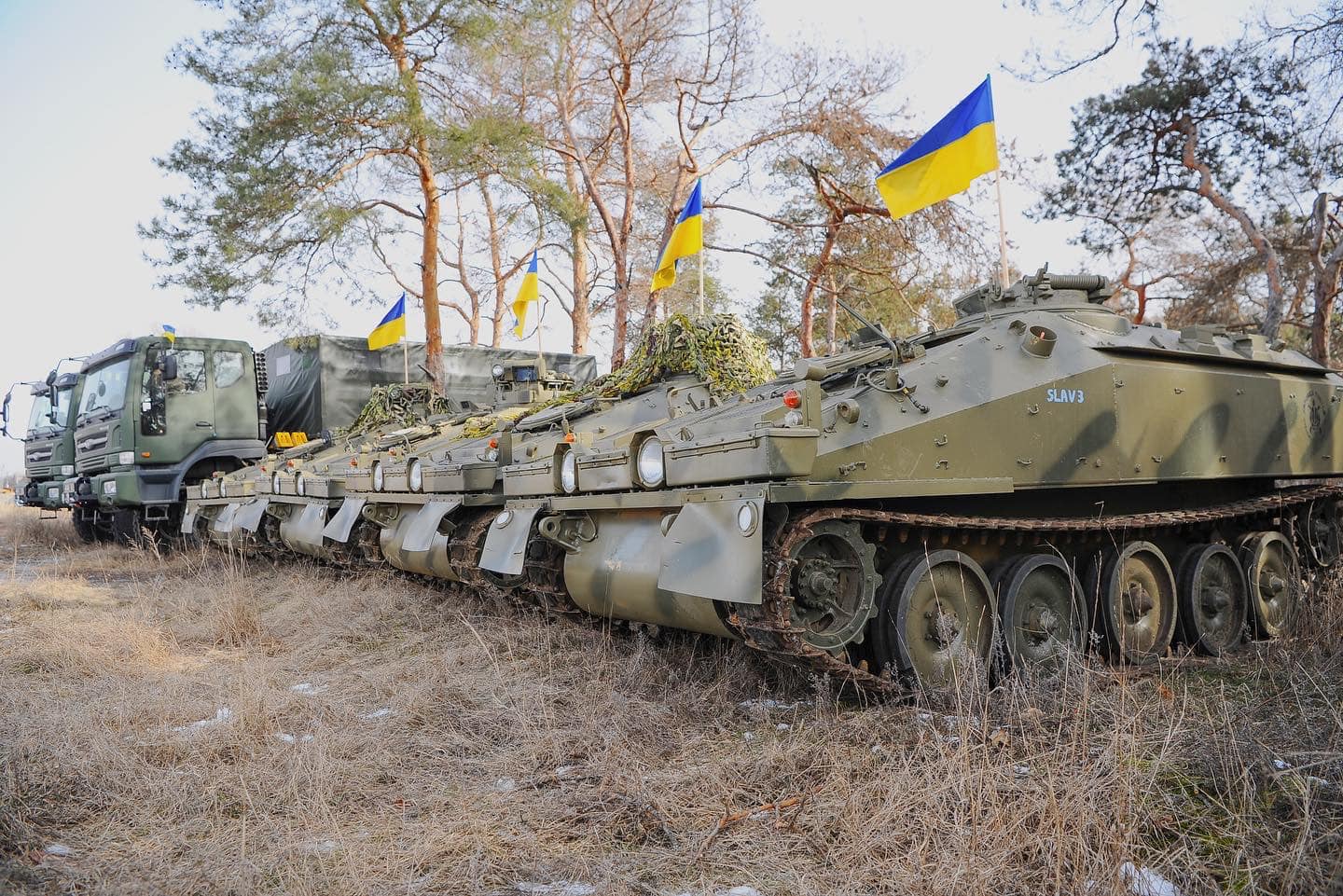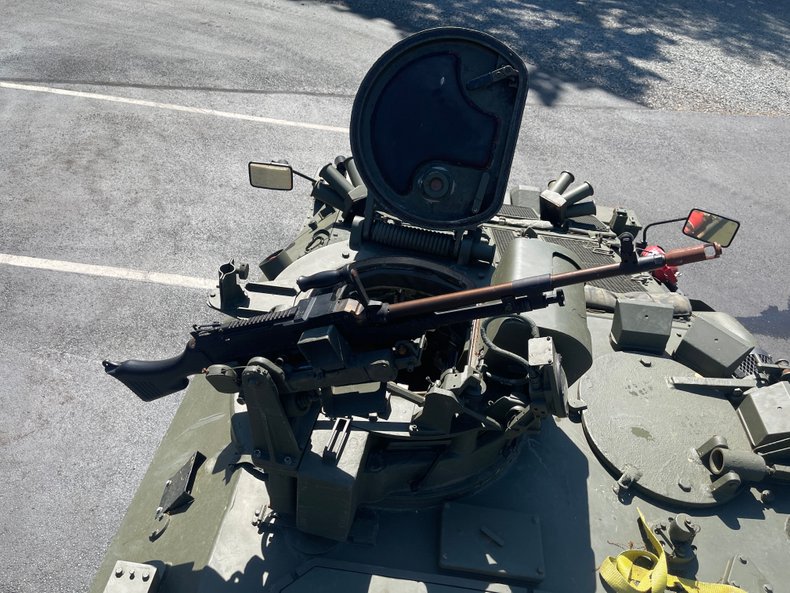
FV103 Spartan is an armored personnel carrier of the CVR(T) family from Alvis Vickers plc, designed as an auxiliary vehicle for mechanizing troops. Since the summer of 2022, armored personnel carriers of this type have been involved in hostilities in Ukraine, where they help our troops destroy the enemy.
The development of a new armored personnel carrier was started to replace the fleet of FV603 Saracen wheeled armored personnel carriers, which had been in service since 1952. Saracen was developed by Alvis plc, and even back in the 70s, they did not meet the technical level to be used by combat units. In addition, British troops in Europe needed tracked platform equipment for effective off-road use.

The search for options started with the approval of the General Staff Operational Requirement (GSOR), which determined the requirements specification for the new vehicle.
To save money, the decision was made to develop a new version of the vehicle on the CVR(T) platform.
CVR(T) – Combat Vehicle Reconnaissance (Tracked) is a tracked platform on which many versions of armored vehicles have been created, including reconnaissance, armored ambulance, anti-tank, light tanks, and others.

The platform proved to be reliable, light, and simple, which further fueled the interest of the General Staff to develop a new armored vehicle on its basis.
Therefore, in 1970, the British decided to develop an armored personnel carrier. And in 1978, Alvis started mass production.
The concept of an armored personnel carrier is based on the box-like design of the hull with aluminum armor.
The aluminum alloy armor made it possible to reduce the weight of the armored personnel carrier.

Although the Spartan undercarriage became 260 mm longer, its components were identical to the other versions, including the FV101 Scorpion reconnaissance vehicle.

The driver is seated in the front left side of the hull next to the engine. To drive with closed hatches, the working place of the driver was equipped with a day-time AV No.44 Mk.2 and night-time AV 2 L5A1 periscope.

The commander is positioned behind the driver. The AV No.16 Mk.1 turret is equipped with eight AV No.42 Mk.1 observation periscopes for daytime use and one night-time periscope No.62 2 L3A1.
A machine gun of L37A1 caliber 7.62 mm is installed on the turret for self-defense on the right. Firing from it is possible from under armor with closed hatches. Ammunition for the machine gun is 2000 rounds.

APC’s passive protection consists of two units, which have four 66mm smoke grenade launchers.
The third crew member is located next to the commander. If necessary, this could be a radio operator, a platoon commander, or an officer. A separate hatch and a daytime periscope are installed for this member of the crew.

A squad compartment is located in the rear of the vehicle for four soldiers who can reach the APC through the rear door or through the hatches. In most cases, access through the roof is limited due to the placement of additional equipment. The combat compartment houses the NBC No.7 Mk.1 air purification system.

The vehicle used a 6-cylinder Jaguar J60 4.2 liter overhead valve engine and a Marcus carburetor. To improve reliability, the compression ratio was reduced, and power dropped from 265 h/p to 195 h/p at 5000 rpm. This power was enough for excellent driving performance both on the road and off-road. Spartan APC engine upgrade program was launched in 1999, and the Jaguar J60 engine was replaced with a new 6-cylinder Cummins 6BTA 5.9 liters and 235 h/p.
Spartan armored personnel carriers were not designed as vehicles for assaulting positions and transporting personnel to the contact line. They are designed to work in auxiliary units. In the early 1980s, Spartan was used to transport air defense teams equipped with Javeline and Starburst MANPADS. Such combat vehicles were also serving in the Royal Artillery, reconnaissance units, and anti-tank and force protection units of the Royal Air Force.
The engineering units used Spartan to rapidly deploy landing spots for Harrier VTOL aircraft due to its size and good off-road speed.
Production of these combat vehicles has always been well organized. Alvis constantly developed various modifications on the CVR (T) platform, but still could not quickly consider the wishes of the military from the British Army of the Rhine (BAOR).
Therefore, the British combat units stationed in Germany asked the Corps of Royal Electrical and Mechanical Engineers stationed near the Ruhr River to convert 67 Spartan APCs into anti-tank missile carriers.

The 23rd REME unit started its work. Specialists installed specially designed turrets on Spartan with two Milan ATGM launchers. Another 13 missiles were placed in the vehicle’s squad compartment.

With the outbreak of a full-scale war in Ukraine, the Defense Forces needed a large number of new military equipment.
In April 2022, the United Kingdom government announced the preparation of 120 armored vehicles to be transferred to Ukraine, 35 of them being Spartan. In July 2022, these vehicles were spotted in battles in the eastern part of Ukraine.
Subsequently, the Serhiy Prytula Charity Foundation started to raise funds to purchase 50 Spartan APCs from a private owner. Due to active financial assistance, the Foundation managed to raise funds to purchase 60 APCs of this type.
The Petro Poroshenko Foundation purchased two Spartan armored vehicles for the Armed Forces of Ukraine, which arrived in Ukraine on December 14, 2022.
The Ukrainian World Congress purchased 13 Spartans for the Armed Forces of Ukraine, funds for which were collected by indifferent people abroad.
As part of the Armed Forces of Ukraine, Spartan APCs became part of the 251st Territorial Defence Battalion, the 127th Territorial Defence Brigade, and the 1st Separate Mechanized Battalion of the 67th Mechanized Brigade of the Ukrainian Volunteer Corps.

Local modernization allowed using an M2 Browning heavy machine gun and an automatic grenade launcher with the AV No.16 Mk.1 turret. This greatly improved the firing capabilities of the vehicle but eliminated the ability to fire from under armor cover.

The turret was supplemented not only with weapons but also with additional protection. This should have compensated for the inability to run fire from inside the vehicle.
Підтримати нас можна через:
Приват: 5169 3351 0164 7408
PayPal - paypal@mil.in.ua
Стати нашим патроном за лінком ⬇
Subscribe to our newsletter
or on ours Telegram
Thank you!!
You are subscribed to our newsletter